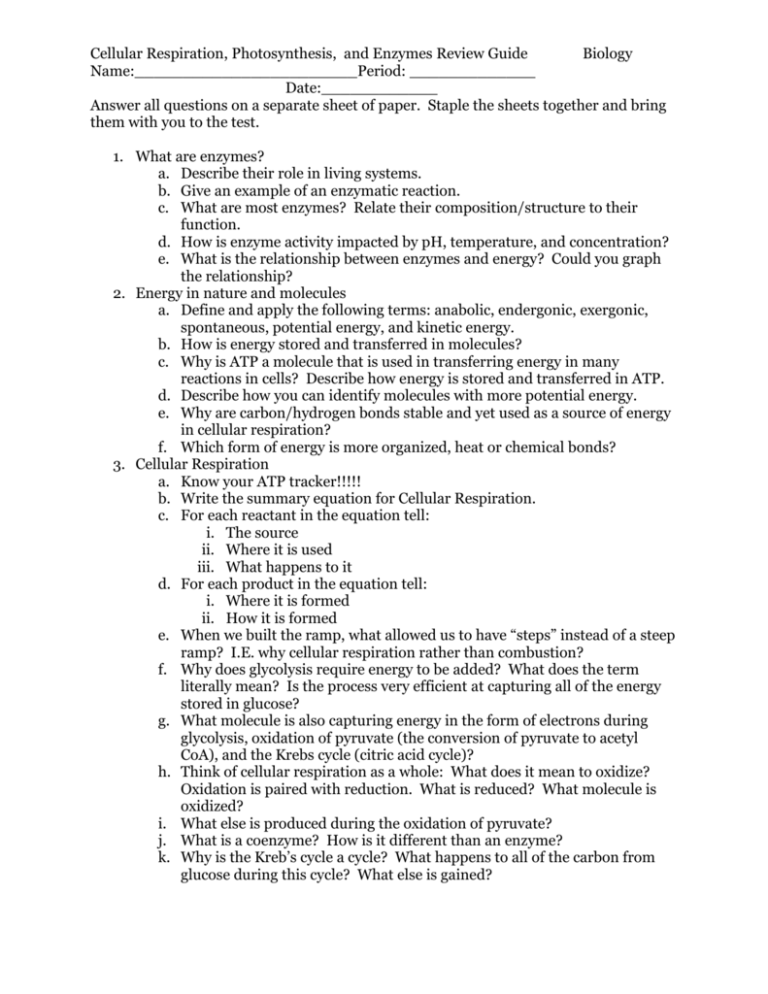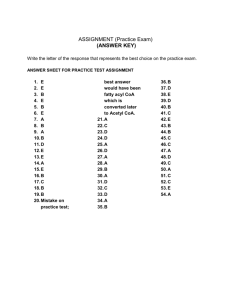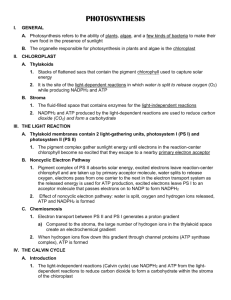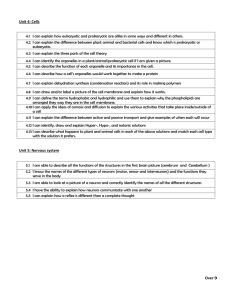Cellular Respiration, Photosynthesis, and Enzymes Review Guide
advertisement

Cellular Respiration, Photosynthesis, and Enzymes Review Guide Biology Name:_______________________Period: _____________ Date:____________ Answer all questions on a separate sheet of paper. Staple the sheets together and bring them with you to the test. 1. What are enzymes? a. Describe their role in living systems. b. Give an example of an enzymatic reaction. c. What are most enzymes? Relate their composition/structure to their function. d. How is enzyme activity impacted by pH, temperature, and concentration? e. What is the relationship between enzymes and energy? Could you graph the relationship? 2. Energy in nature and molecules a. Define and apply the following terms: anabolic, endergonic, exergonic, spontaneous, potential energy, and kinetic energy. b. How is energy stored and transferred in molecules? c. Why is ATP a molecule that is used in transferring energy in many reactions in cells? Describe how energy is stored and transferred in ATP. d. Describe how you can identify molecules with more potential energy. e. Why are carbon/hydrogen bonds stable and yet used as a source of energy in cellular respiration? f. Which form of energy is more organized, heat or chemical bonds? 3. Cellular Respiration a. Know your ATP tracker!!!!! b. Write the summary equation for Cellular Respiration. c. For each reactant in the equation tell: i. The source ii. Where it is used iii. What happens to it d. For each product in the equation tell: i. Where it is formed ii. How it is formed e. When we built the ramp, what allowed us to have “steps” instead of a steep ramp? I.E. why cellular respiration rather than combustion? f. Why does glycolysis require energy to be added? What does the term literally mean? Is the process very efficient at capturing all of the energy stored in glucose? g. What molecule is also capturing energy in the form of electrons during glycolysis, oxidation of pyruvate (the conversion of pyruvate to acetyl CoA), and the Krebs cycle (citric acid cycle)? h. Think of cellular respiration as a whole: What does it mean to oxidize? Oxidation is paired with reduction. What is reduced? What molecule is oxidized? i. What else is produced during the oxidation of pyruvate? j. What is a coenzyme? How is it different than an enzyme? k. Why is the Kreb’s cycle a cycle? What happens to all of the carbon from glucose during this cycle? What else is gained? Cellular Respiration, Photosynthesis, and Enzymes Review Guide Biology Name:_______________________Period: _____________ Date:____________ l. Compare substrate level phosphorylation to oxidative phosphorylation (ATP synthesis at the electron transport chain). m. The high energy production stage involves chemiosmosis and the electron transport chain. i. First, describe what happens to the electrons ii. Second, what happens to the protons (H+) iii. Describe how both the protons and electrons are used to produce ATP. Also, describe the enzyme involved in the process. iv. What molecule MUST be present for this to occur? n. What happens when oxygen isn’t present? How does energy produced differ? What are the products? How are the products different in different organisms? Why do different organisms have different products? 4. Photosynthesis a. All autotrophs get energy to power cell activities from what source (originally)? b. What are the two parts of photosynthesis? Where does the first step occur? c. Describe the movement of the electron from photosystem II. Specifically, where does it come from, where does it end up, how is it replaced. d. What is produced as a result of the movement of this electron through the electron transport chain? e. What molecule captured the electrons at the end of the electron transport chain? f. How is cyclic electron flow different from noncyclical electron flow? g. What is produced during the first step of photosynthesis? How are these products used? h. What enters step 2 of photosynthesis? i. What does it mean to say carbon is ‘fixed’? j. What is produced by the Calvin cycle? k. Write the summary equation for photosynthesis. l. For each reactant in the equation tell: i. The source ii. Where it is used iii. What happens to it m. For each product in the equation tell: i. Where it is formed ii. How it is formed n. Why do plants appear green?











